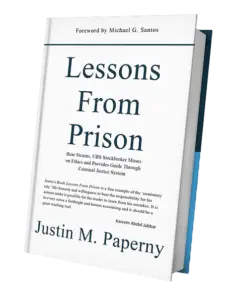That’s right—the Encore Webinar on the New BOP Directive!
It’s not every day we revisit a topic this quickly, but the reaction from last week made it clear: we needed more time to cover this new BOP directive moving eligible people to home confinement instead of the halfway house. So I brought back team, answered questions and I did my best impression of a federal judge who’s read 10,000 excuses (note, I am not a federal judge!). I am guy who has attended more than 1,500 sentencing hearings and worked with a lot of great people. Again, to be clear, I am not a Judge!
Again, this encore focused entirely on the Bureau of Prisons’ new directive prioritizing home confinement over halfway house placements—and the massive opportunity it presents, if (and only if) your file is built to support it.
The Memo Isn’t a Guarantee—Your File Might Be
On May 28, 2025, the BOP issued a memo that outlined a significant shift:
Prioritize home confinement for individuals who:
- Are eligible under the First Step Act, RDAP, and Good Time Credit
- Do not require the structure of a halfway house
- Demonstrate preparation and support
It also calls for use of Conditional Placement Dates, calculated using:
- 18 U.S.C. § 3624(g) – FSA earned time credits
- 18 U.S.C. § 3621(e) – RDAP early release
- 18 U.S.C. § 3624(c) – Second Chance Act community placement
- 18 U.S.C. § 3624(b) – Good time (15% off sentence)
We broke down the math in this week’s replay. A 60-month sentence, with every program available, could look like this:
- 9 months off for Good Time → 51 months
- 12 months off for RDAP → 39 months
- 12 months off for FSA credits → 27 months
- 12 months home confinement (instead of halfway house) → 15 months in prison
But that outcome isn’t handed out. It’s earned—and only if your record leaves no doubt.
So What Would a Judge Say?
Someone in our community asked: “How do you think a judge would respond to the new BOP memo?” So I wrote a letter, from the perspective of a federal judge who’s seen it all.
“I’ve read the memo. I’ve read the statute. I’ve read more ‘extraordinary and compelling’ motions than I care to count. And I’ll tell you what this is: window dressing—unless the people inside the system do something different.”
He continued:
“This memo doesn’t say you will go home. It says you may—if the staff feel they have enough information to move you.”
The judge then gave the bluntest checklist I’ve ever heard:
- No plan? No move.
- No housing verification? No move.
- No work documentation? No move.
- No evidence you’ve done anything beyond sit and wait? No move.
And that’s the entire thesis of this replay: the policy means nothing without the file to support it.
What Judges and Staff Want to See
Here’s what gets attention, according to the judge’s letter:
- A typed release plan
- Housing verification with real contact info
- Employment or volunteer offers
- Program documentation with start and end dates
- A weekly activity calendar
- Non-templated letters of support
- A narrative that owns conduct without begging
- A list of names involved in your release and reentry
“Don’t tell me you’ve changed. Show me who helped you. Show me what you’ve built. Show me what you’ve taught someone else.”
The judge closed with a reminder:
“Don’t blame the BOP for keeping you in. Blame the blank page in your central file.”
What Tracii and Glenn Did Right
This isn’t theory. Tracii Hutsona created her release plan before she surrendered. She documented her programs. She taught other women inside. Her judge shaved 11 months off her sentence—not because of emotion, but because of documentation.
Glenn Hudson submitted his release plan and business plan to his case manager. He led release planning workshops. He published through Prison Professors Talent. He earned every credit, completed RDAP, and transitioned early.
They didn’t rely on the BOP to move first. They built a record that forced a second look.
Required vs. Extraordinary
Completing RDAP? That’s required. Avoiding incident reports? Required. What’s extraordinary?
- Publishing your release plan
- Leading programs
- Teaching others
- Volunteering through nonprofits
- Submitting work every quarter—not just before release
- Using PrisonProfessorsTalent.com to show documented effort
As Michael Santos says:
“The people who succeed are the ones who stop waiting for permission—and start submitting proof.”
What Grade Are You Earning?
We revisited this question during the webinar. Michael uses the school-grade framework:
- Serve the full 60 months? F
- Serve 45? C
- Serve 30? A
Everyone “graduates” eventually. But not everyone graduates with credibility—or dignity.
Who Are You Persuading?
It’s not just the case manager. Your file will pass through:
- Unit team
- Reentry affairs coordinator
- Halfway house staff
- Probation officer
- Possibly even a judge if a sentence reduction or motion is filed
So your file must be written with them in mind. They’re asking:
“Has this person created structure, safety, and a reason to move them home?”
If your file doesn’t answer that, you’re going to wait.
What You Must Build (Now)
Use this structure. Start today:
- Typed release plan
- Housing verification
- Employment or volunteer documentation
- Weekly schedule
- Program documentation (with dates)
- Narrative (ongoing, not one-time)
- Letters of support (real, not recycled)
- Published work or profile (Prison Professors Talent or private site)
If you’ve already built it, update it.
If you haven’t, start with a single document this week.
Final Reflection
The judge in the letter said what many case managers won’t say out loud:
“I don’t need you to be extraordinary. But I need you to be specific.”
You don’t have to impress anyone. You just have to show the work. And if you haven’t done the work—don’t expect a memo to fix that.
Want Help?
- Register for our next Home Confinement Strategy Webinar
- Email us for the Release Plan Checklist PDF
- Use our nonprofit platform PrisonProfessorsTalent.com to start documenting now
But don’t delay.
If the decision had to be made tomorrow, would your file give them a reason to say yes?
Justin Paperny



